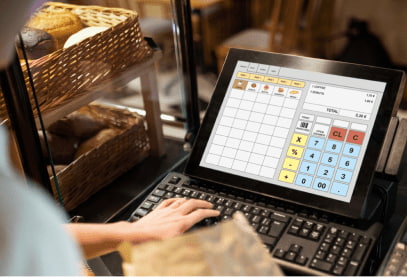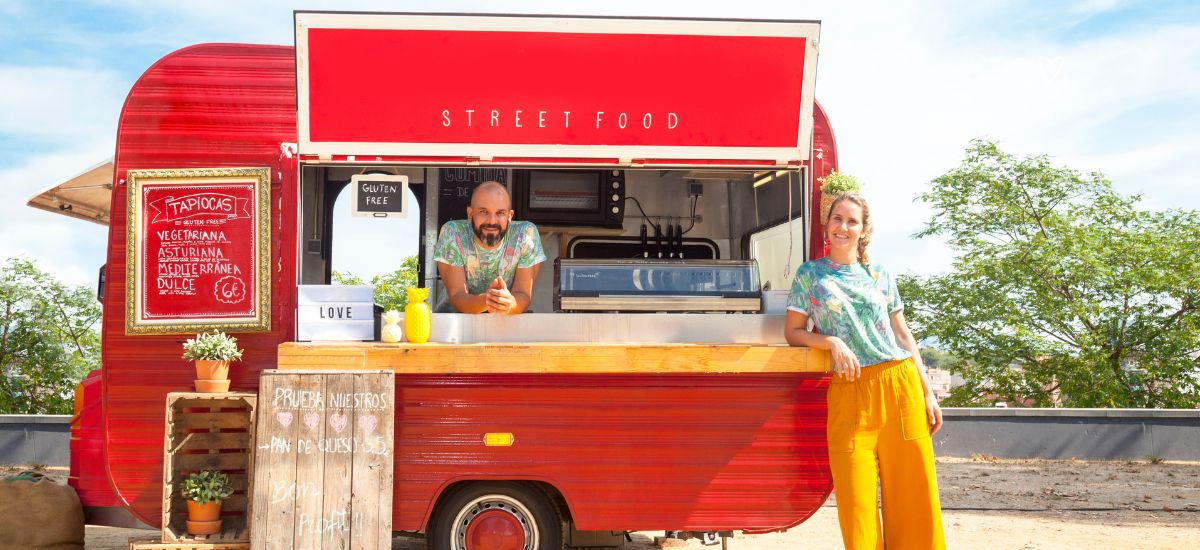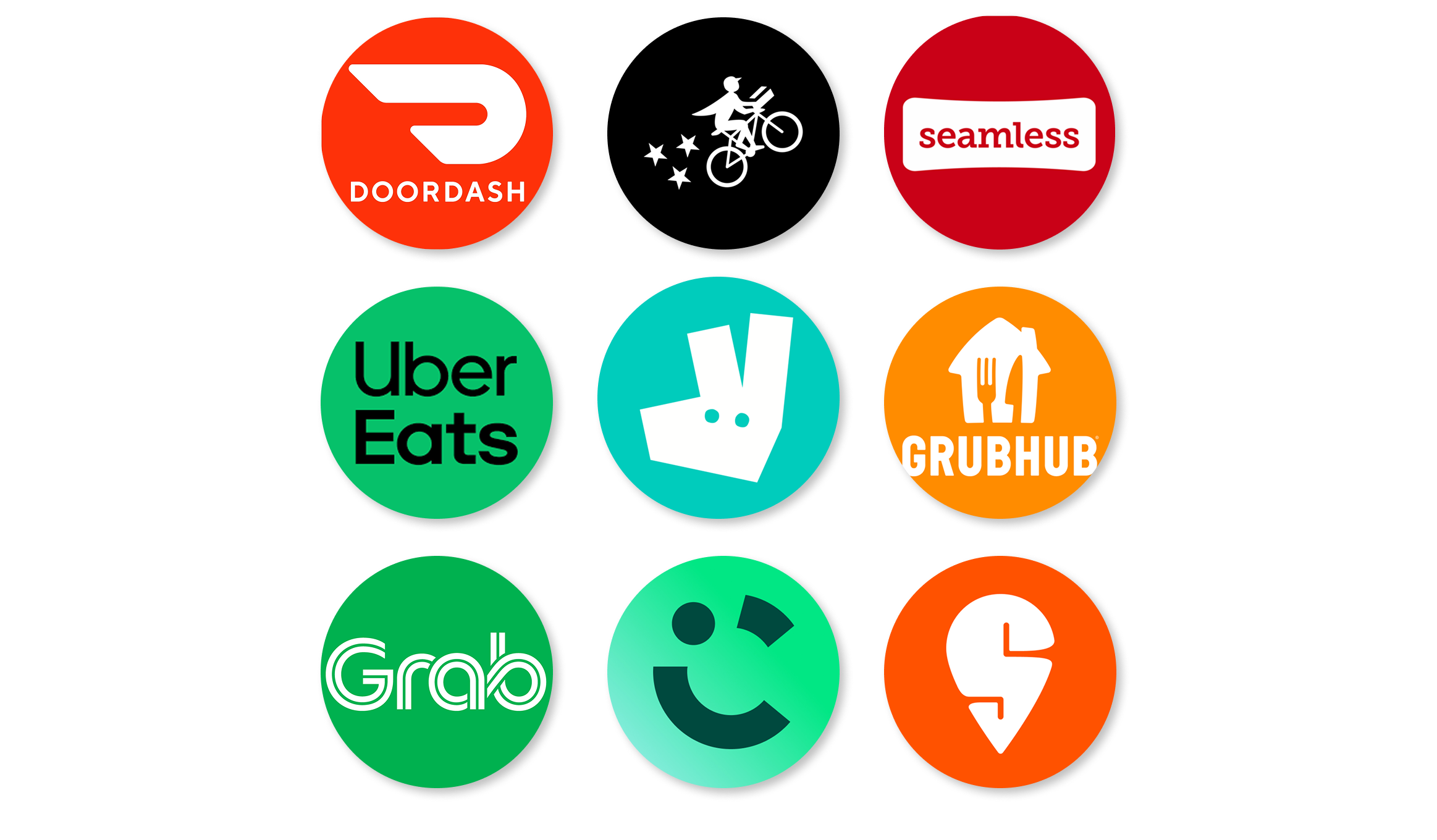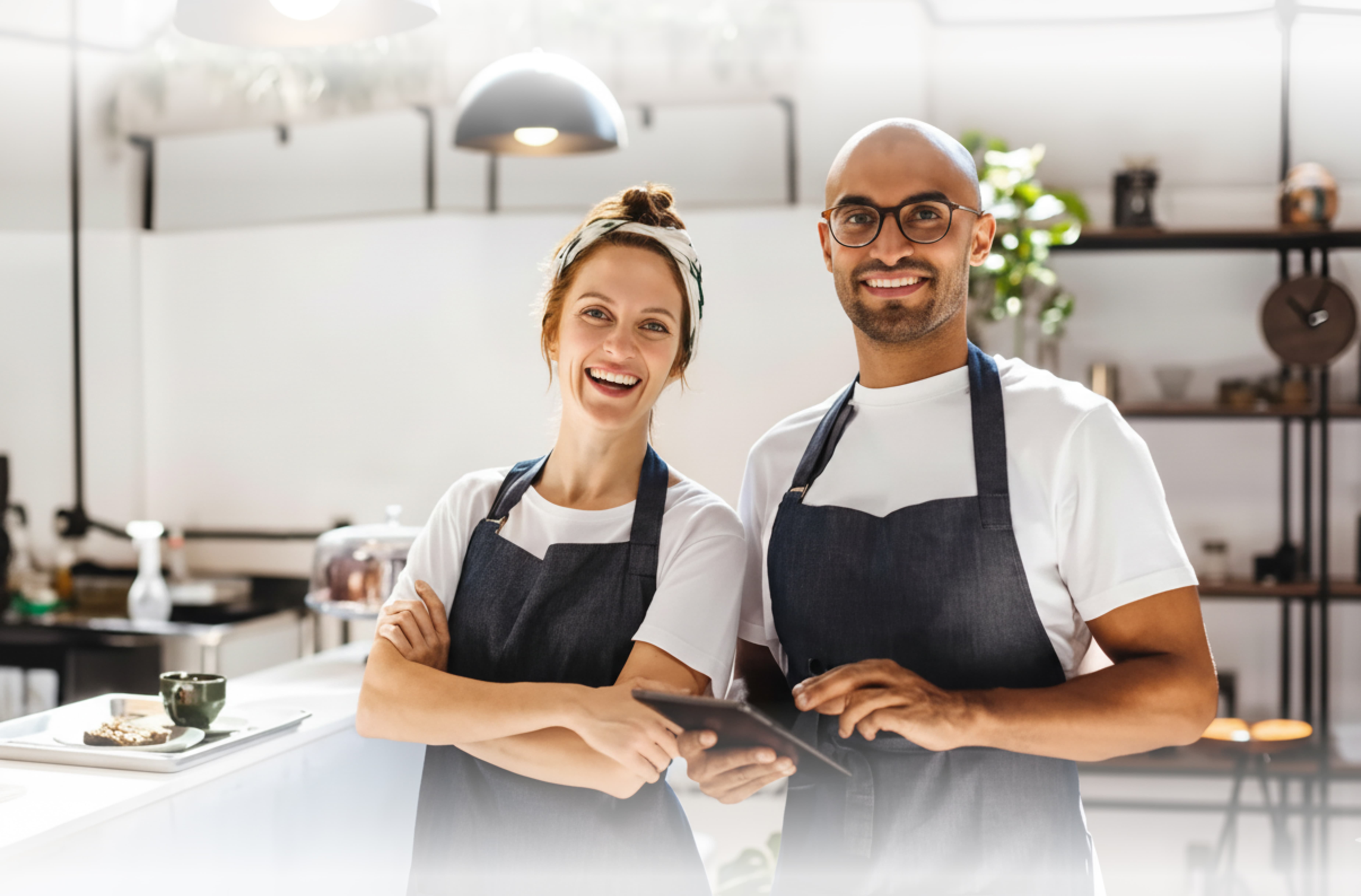Key Takeaways
- Implement a direct online ordering system to reduce third-party fees, strengthen your brand identity, and gain valuable customer data for marketing. A solution like RestoLabs offers commission-free ordering with customizable branding.
- Optimize your digital menu with clear pricing, high-quality images, and strategic item placement to drive conversions. Provide a seamless ordering experience across platforms like your website, social media, and QR codes.
- Enhance customer satisfaction through real-time order tracking, multilingual support to cater to diverse audiences, and integrated loyalty programs that incentivize repeat business.
- Leverage built-in analytics to gain insights into sales trends, popular items, and customer preferences to continuously improve your online ordering strategy. Sync your POS with the online system for streamlined operations.
Proven Online Ordering Best Practices for Restaurant Success
In an industry with razor-thin margins, the last thing you want is to lose customers because your site’s clunky, user experience isn’t great, or the ordering process is chaotic.
Plus, 60% of Americans prefer takeout or delivery over dining. That means more than half of your potential customers prioritize convenience over ambiance. If order processing, inventory management, kitchen coordination, and timely delivery or pickup, aren’t optimized, you could miss out on valuable revenue.
Hence, we’ll explore best practices for restaurant online ordering that will help you optimize your restaurant’s online ordering system, improve customer satisfaction, and eventually increase revenue.
Why Optimizing Your Online Ordering System is a Must
When we look at the diners’ eating/dining habits, especially after the pandemic, it has drastically changed.
- For example, 66% of adults say they’re more likely to order takeout than before the pandemic. (Source)
- 70% of consumers say they'd rather order directly ... preferring that their money goes straight to the restaurant and not a third party. (Source)
- 35% of guests use mobile apps weekly. (Source)
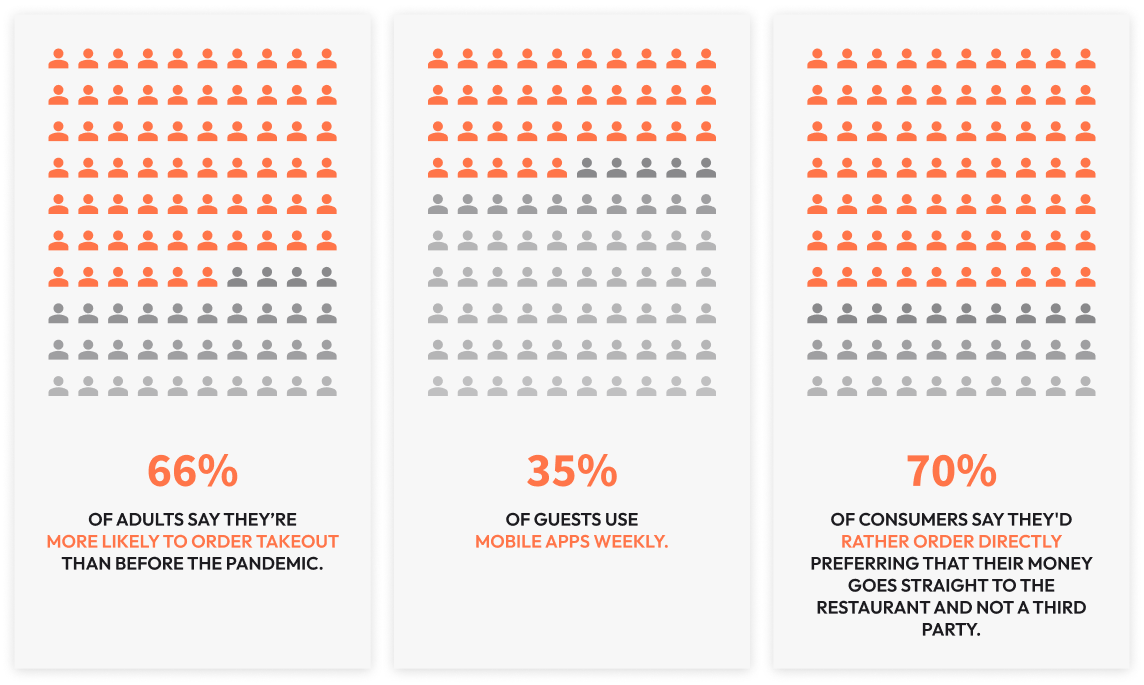
These stats make one thing clear for restaurant owners: diners prefer to order online, but one bad experience and they’re taking their hunger (and their wallet) somewhere else.
Hence, it’s imperative to implement restaurant online ordering best practices to attract more diners and keep your existing customers coming back.
11 Restaurant Online Ordering Best Practices for Your Restaurant
We’ve outlined 11 best practices to optimize your restaurant operations and bring in more diners!
1. Opt for a Direct Online Ordering System
Third-party food delivery platforms are great for tapping into a broader network of diners. But solely relying on them can chip away at your profits with hefty commission fees.
A direct ordering system, on the other hand, reduces commissions lost to third-party apps and gets customer information for data-driven marketing.
In fact, with a direct online ordering platform like RestoLabs, Pizza Pirate in Benicia, saw a 40% higher average ticket, reduced errors, streamlined operations, and improved customer experience.
Opting for a direct food ordering system is a win-win for you and your customers. Customers can explore your interactive online menu, then place an order for right now or later directly on your website. With a solution like RestoLabs, these orders can flow immediately into your POS in real-time. This helps you reach and cater to a wider audience, increase brand awareness, and make your business profitable without spending heavily on marketing.
2. Create a Branded Ordering System
52% of US diners prefer using a restaurant's own branded app or website to order food delivery v/s a third-party food portal app. Your online ordering system isn't just a way for customers to order food, it's an extension of your brand.
Take Pacific Catch, for example. They weave their mission of sustainability right into their menu with phrases like "thoughtfully sourced". This way, customers instantly know what they stand for, which builds trust and even adds an extra flavor to the ordering experience.
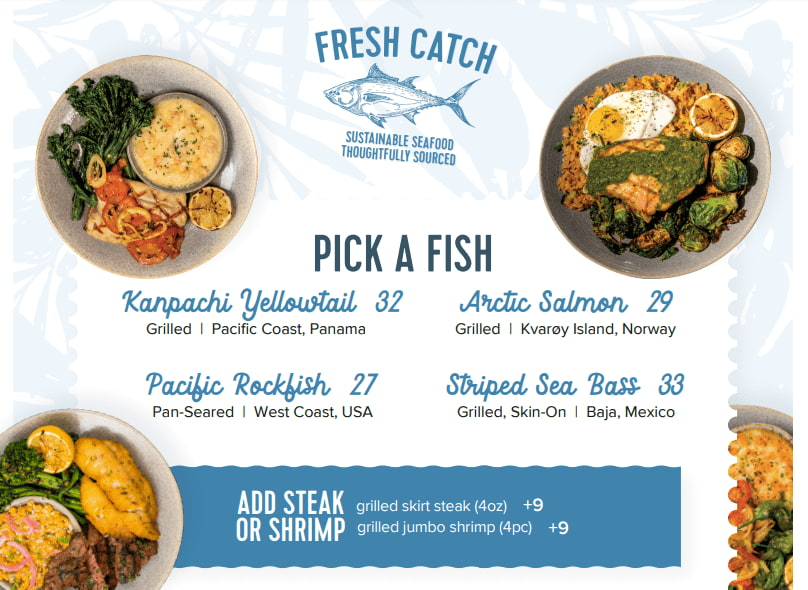
Such custom websites also allow for better SEO, performance, accessibility, and responsiveness, leading to higher sales. RestoLabs has customizable features that can improve the checkout process. With the Label Editor, you can easily communicate important messages, like "Closed for Ordering" or "Items Out of Stock," using custom text styles.

Plus, the color editor allows you to create a color scheme that aligns perfectly with your restaurant's branding, offering a visually appealing experience for your customers.
3. Use Facebook and Instagram Ordering
Your restaurant’s Facebook and Instagram pages are powerful sales channels. It lets you reach a wider audience, increase visibility, and promote your menu.
Simply add the direct online ordering link to your social media handle description so that your audience can directly order from the link. It saves them the time and effort in searching for your website and automatically increases sales.
We’ll also cover how syncing your POS system to a food delivery platform can make a difference for your business.
4. Create a Digital Menu that Converts
An optimized menu can be the difference between "add to cart" and "buy now”.
When switching from a physical menu to an online one, prioritize popular, profitable menu items that will be easy to transition to takeout and delivery meals. In menu engineering terms, this means you should keep your stars and your puzzles. You could also focus on reimagining your top 10 to 15 menu items to limit inventory spend and make your kitchen process more efficient. Along with this, follow these basic practices to optimize your menu:
- Highlight your most profitable dishes in the "golden triangle" i.e. in the triangle zone of your website. For example, the RestoLabs online ordering menu layout lets you do so.
- Use clear section breaks, and high-definition photos to make your dishes look mouthwatering
- Use high-contrast text for easy reading, and plenty of white space to keep the menu uncluttered
- Keep tabs on changing dining habits, and tweak the menu: Are diners suddenly ordering a specific menu item frequently? Should you place it in the golden triangle?
- Use pop-ups to upsell items, analyze trends, and offer discounts for direct orders vs. third-party platforms

What makes the above Italiano example stand out is their super detailed menu with clear descriptions and key ingredients. It’s perfect for customers who want to buy the most-selling Vegetable pizzas, followed by meal combos and appetizers. The menu is clean, categorized, and informative, making it a win for everyone.
Pro tip: Go through these restaurant menu examples to curate a visually appealing menu that converts.
5. Offer Transparent Pricing
Customers expect clear, upfront pricing—any inconsistency can lead to frustration and cart abandonment. Outdated systems and hidden fees create doubts, making diners question if they're being overcharged.
Transparency not only builds trust but also reduces customer inquiries, allowing staff to focus on operations instead of explaining unexpected charges.
- Display item prices, taxes, and delivery fees upfront
- Keep online menu prices consistent with in-store pricing
- If prices are higher for quality or convenience, communicate why
Note: Read this before raising your menu prices to make an informed decision.
6. Provide Loyalty Programs
Loyalty program members spend 20% more on restaurants than non-members. The impact ripples when your loyal diners start benefiting more from it as this naturally attracts new customers through word of mouth.
Types of Loyalty Programs:
- Points-based: Customers earn points for each dollar spent, which can be redeemed for rewards.
- Tiered: Customers move through different levels based on their spending or engagement, unlocking more valuable rewards as they advance.
- Frequency-based: Rewards are based on how often customers visit, encouraging repeat business.
- Hybrid: A combination of the above systems, tailored to specific customer behaviors.
The type of loyalty program should align with:
- Customer base: Big spenders may prefer milestone rewards, while frequent buyers may favor points-based systems.
- Menu: Offer rewards that match your restaurant's offerings.
- Business goals: Consider your goals, whether it’s increasing visits or boosting overall spending.
For example, Chipotle Rewards offers members exclusive perks such as free chips and guacamole after their first purchase and points for every dollar spent, encouraging repeat visits. Such a well-thought-out loyalty program with best practices will increase customer retention by providing incentives to return to the same restaurant repeatedly.
7. Set Up QR Code Ordering
Online ordering isn’t limited to just delivery and pickup anymore. With QR code-based online ordering, even in-house dining experiences are being revolutionized.
QR code ordering is changing the customer dining experience by streamlining the process, reducing wait times, and giving diners more control over their orders, all while improving restaurant efficiency.
With QR codes, customers can send direct meal orders to the kitchen staff using a unique QR code placed at each table, changing the dining experience. Not only does it optimize operations and make management easier for your restaurant, but the intuitive UX/UI design ensures that even customers who aren't tech-savvy can easily navigate and use the system without hassle.
This will improve the customer experience, increase order size, quick turnover of tables, simplify restaurant operations, reduce errors when taking orders, and reduce wait times.
8. Make Your Table Ordering System Multilingual
With 66 million people speaking a language other than English, language barriers quickly become a hindrance to providing quality customer service. Restaurants hence, need to consider how they can make ordering easier for everyone.
A study highlights severe social anxiety among non-native speakers given the cultural differences. A restaurant table ordering system with multi-lingual support can help alleviate this and serve larger demographics of customers. Plus, it brings your restaurant positive word-of-mouth along with more sales.
Note: An added benefit is to opt for an online ordering system like RestoLabs that lets you create a branded website with multilingual ordering and customer support.
9. Track and Manage Orders
When customers know when their food is on the way, ready for pickup, or about to be delivered, it saves your staff from “Where’s my food?” calls and reassures customers that their food will arrive on time.
For example, RestoLabs' order management system simplifies tracking by updating order status in real time and sending instant notifications—such as alerts about unavailable items.
Plus, it allows you to separate orders into pre-orders, current, completed, canceled, and overdue categories for better tracking. You can communicate with customers directly from the dashboard, print orders with one click, and view order lists across multiple restaurant locations.
10. Monitor and Analyze Performance
Opting for a direct ordering platform with an in-built analytics feature lets you track key metrics such as order accuracy, order processing times, customer satisfaction ratings, and delivery performance. With such sales analytics, you gain insights into customer preferences, popular menu items, and ordering trends.
- Menu analytics to identify best-selling dishes and items that aren’t best-sellers.
- Day and time analytics to get accurate data on the busiest and slowest days, with detailed insight into your busy hours.
- Location-based analytics to get an unbiased insight into the locations that are performing best.
11. Sync your POS with online ordering platforms
POS integration simply bridges the gap between your restaurant's point-of-sale and other apps like direct ordering platforms, delivery apps, or inventory management systems.
Whether you’re using third-party food delivery platforms or a direct ordering platform, it helps you connect data across multiple platforms. With such third-party integrations, you can create an omnichannel experience to grow your restaurant business and improve the customer experience while eliminating the need for additional hardware and software.
The direct benefit of this unified system is it lets you reach more customers and increase your order volume as customers can place orders through their preferred platform, driving up sales.
Pick the Best Restaurant Online Ordering System
To optimize your restaurant operations, you need an online ordering system that’s easy to integrate into multiple POS systems and payment gateways and has built-in marketing tools to reach more diners.
RestoLabs is a commission-free online ordering platform that gives restaurants full control over their branding, pricing, and customer relationships, with seamless POS integration, multilingual ordering, powerful analytics, and 100+ integrations for delivery, payments, and loyalty programs
You can expand your reach with this fully integrated online ordering system that syncs with your preferred delivery partners. The in-built marketing tools only further add to the benefits of extracting customer insights.
Cristina Ramirez, the owner of Great Wraps, Houston outlet, recalls her apprehension while looking for an online ordering system for restaurants.
“Pricing, ease of ordering, customer management, set-up process, and customer service are just some of the essential features to consider while taking your pick. But it’s also important to think long-term to see which service partner will provide sustained benefits and support. The key lies in doing exhaustive research, which is how I finally came to settle for RestoLabs. “
Cristina's catering sales, which were zero at the start, now make up 20% of her total transactions, proving that the right system can drive sales.
Want to know how partnering with RestoLabs can help you implement online ordering best practices? Book a demo to find out!
Frequently Asked Questions
Using a direct online ordering system like RestoLabs reduces the commissions lost to third-party apps, provides customer data for marketing, and allows you to create a branded ordering experience. For example, Pizza Pirate saw a 40% higher average ticket, reduced errors, and improved operations after switching to RestoLabs.
Highlight your most profitable dishes prominently, use high-quality photos and clear descriptions, and keep the layout clean and organized. Also, update your menu regularly based on customer preferences and dining trends. RestoLabs' menu tools allow you to implement these best practices easily.
Loyalty program members tend to spend 20% more at restaurants. A well-designed program with points, tiers or visit-based rewards encourages repeat business by incentivizing customers to keep returning to your restaurant.
QR code ordering streamlines the process, reduces wait times, and gives diners more control over their orders, all while improving restaurant efficiency. Customers can directly send orders to the kitchen using unique QR codes at each table.
RestoLabs' order management system updates order status in real-time, sends notifications about unavailable items, allows separating orders into categories like pre-orders and completed, and lets you communicate with customers directly from the dashboard.
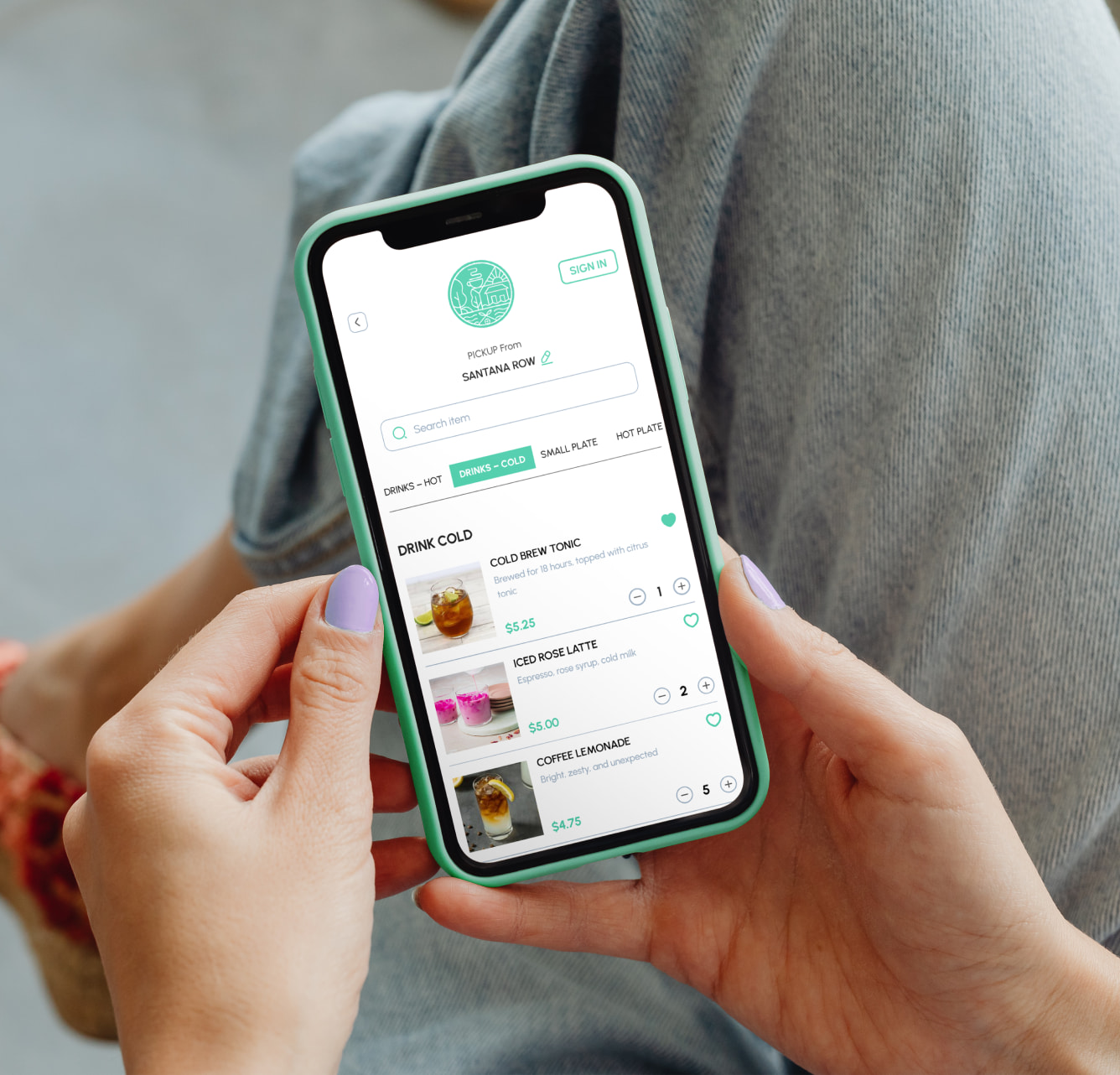

.gif)

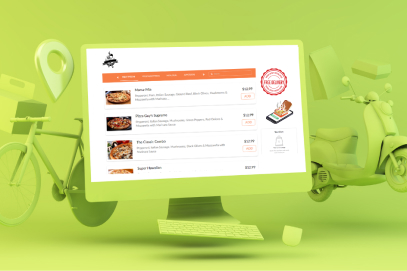
.png)
